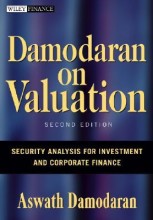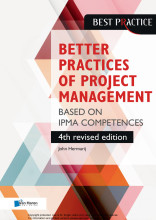Introduction to Valuation - Approaches to Valuation
10 important questions on Introduction to Valuation - Approaches to Valuation
What are the three approaches to valuation?
- discounted cashflow valuation
- Relative valuation - estimating the value of an asset by looking at the pricing of comparable assets
- Option pricing valuation - similar to share option characteristics
What are the two ways for DCF valuation (discounted cashflow valuation)
- value the entire business with both assets in place and growth assets - also called firm or enterprise valuation. The cash flows before debt pyaments and after reinvestments are called Free Cash flows to the Firm and the discount rate is called the cost of capital.
- equity valuation - cash flow after debt payments and reinvestment needs are called Free Cash Flows to Equity.
The discount rate is a function of ?
The riskiness of the estimated cash flows.
- Higher grades + faster learning
- Never study anything twice
- 100% sure, 100% understanding
What is the main difference between valuing an asset or valuing a company?
A company is an ongoing concern. It has asstes that it already owns, but also assets it expects to invest in in the future.
Explain liquidation valuation, why is the value in practice different from valuing individual assets? What parameters define the magnitude of the difference?
The urgency associated whit selling the assets quickly may result in a discount on the value, the magnitude of this discount depends on the number of buyers, the asset characteristics and the state of the economy.
Explain firm valuation, its free cash flows and its cost of capital.
Takes into account both assets in place and growth assets. The CF before before debt payments and after reinvestments needs are called free cashflows to the firm. The discount rate that reflects the composit cost of financing is called the cost of capital.
What are the two ways of viewing risk?
Default risk: company will fail an commitment to make a payment such as interest or principle due
Variation of actual returns around expected returns: the greater the variation, the greater the risk. Measures risk based on variance.
What are the three ways estimating expected growth?
1. Look at the company's past and use historical growth rate.
2. Obtain estimates of growth from more informed sources; management or others who follow the firm.
3. How much and how well earnings are reinvested in the firm.
What three components are important when establishing a peer group in relative valuation?
Similar cash flows, risk and growth potential.
Name the three variations of relative valuation.
1. Direct comparison (find one or two companies that are almost exactly alike)
2. Peer group average (compare the company's price using a multiple to a peer group's average multiple
3. Peer group average adjusted for differences (mostly subjective control for differences between companies)
The question on the page originate from the summary of the following study material:
- A unique study and practice tool
- Never study anything twice again
- Get the grades you hope for
- 100% sure, 100% understanding































